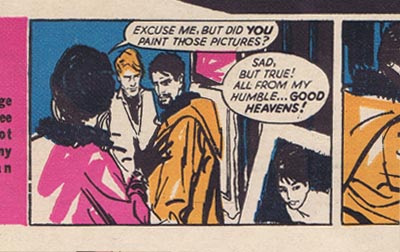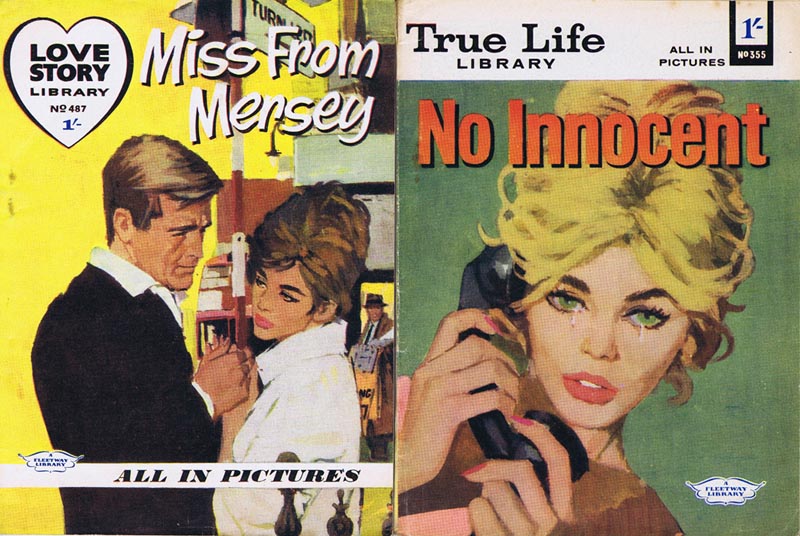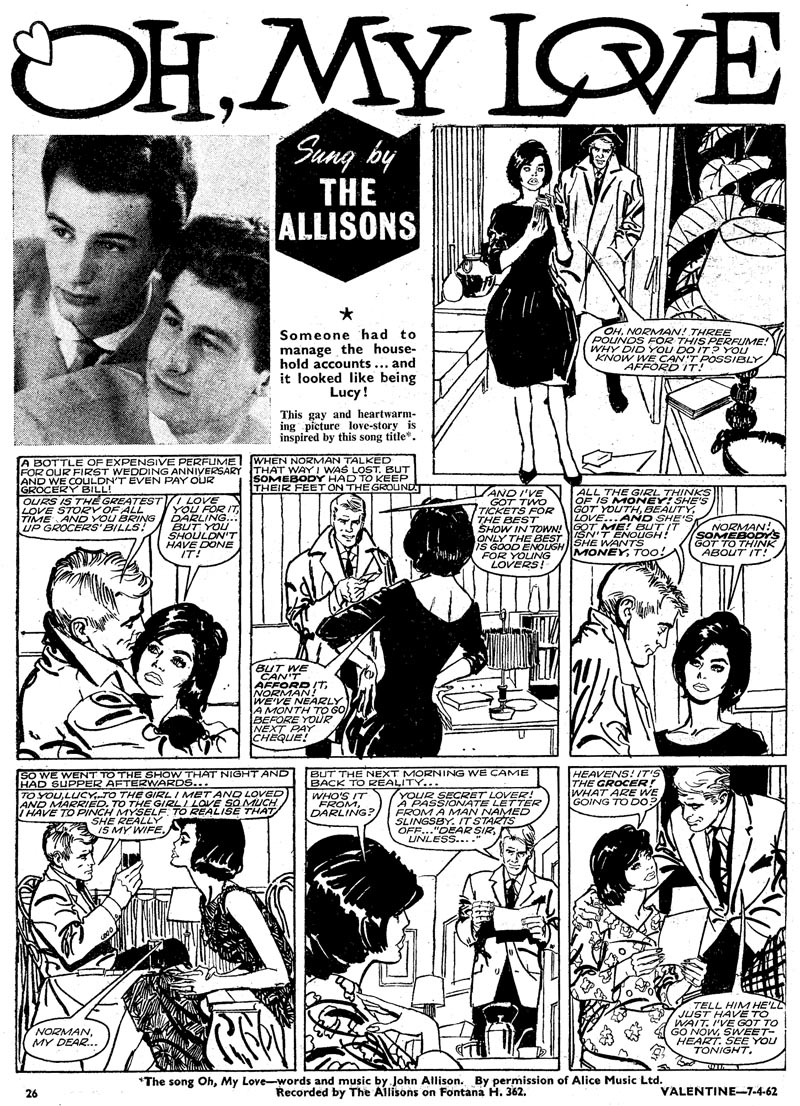* This week David Roach, British comics artist of Judge Dredd, author, comics historian, and long-time TI subscriber takes over as guest author so I can enjoy a brief break. Many thanks, David!
Things don’t always work out quite as you have planned. The original idea was for me to profile a number of Spanish artists, drawing from my collection of their work in British comics, say, three a day. However on sending through scans of the very first artist our glorious leader declared – “Stop! Who is this, he’s incredible, let’s have a week devoted to this guy.'

So here it is a week dedicated to the '60s work of the great Spanish artist Angel Badia Camps. Who? Well there’s the rub; Camps is one of many hundreds of Spanish artists who plied their trade in British comic books over the decades, some of whom later made it over to the states working for Warren or Skywald but most remain little known outside of their native Spain (in fact many are still unknown even there).

But first a little background information. Unlike in the U.S, British comics started out (from 1890 on) as weekly publications mostly aimed at young readers and drawn in a cartoony style. The great expansion of more realistically drawn comics began in the early 50s with titles such as The Eagle, Schoolfriend and Cowboy Comics. Within a few years the market had expanded to well over 100 titles appearing on the newsstand every week, encompassing several main genres- boys adventure ( sport, westerns, war, science fiction, crime and classic adaptations, everything except superheroes in fact), girls comics ( ballerinas, boarding schools and ponies), romance, humour and nursery stories. These comics ranged in size and shape from the likes of the tabloid sized Eagle which could print fully painted strips in vibrant colour to black and white magazine sized weeklies such as Lion, Tiger, Valentine and Girls Crystal and the pocket sized “Picture Library” comics which featured 64 paged strips topped off with a painted cover.

To fill the demand British publishers such as Amalgamated Press ( later known as Fleetway and then I.P.C ) Hulton, Pearson, D C Thomson , Micron and others naturally tried to recruit local artists but without much of a tradition of realistic strips to draw from talent proved to be thin on the ground. Great artists did emerge and names such as Frank Hampson , Ron Embleton, Frank Bellamy and Don Lawrence might be familiar to some of you, but there were simply not enough of them to satisfy demand and to fill that gap the publishers had to look elsewhere. Starting in late 1954 artists from Europe began to find work in the U.K through agencies such as A.L.I from Belgium, Cosmopolitan , D’Ami and V.V from Italy and S.I, Bardon and Creacciones from Spain. To get an idea of the sheer numbers involved I should mention here that I know of at least 75 artists from Argentina, 150 from Italy and over 370 from Spain who have worked at some time in British comics. Soon it became apparent that different nationalities were particularly adept at certain genres; all were put to work on the numerous war comics which flooded the newsstands, The Argentinians ( such as Alberto Breccia and Arturo Del Castillo ) were masters of the Western and the Spanish came to dominate the enormous number of romance titles.

One of these romance artists was Angel Badia Camps.
Continued tomorrow

Things don’t always work out quite as you have planned. The original idea was for me to profile a number of Spanish artists, drawing from my collection of their work in British comics, say, three a day. However on sending through scans of the very first artist our glorious leader declared – “Stop! Who is this, he’s incredible, let’s have a week devoted to this guy.'

So here it is a week dedicated to the '60s work of the great Spanish artist Angel Badia Camps. Who? Well there’s the rub; Camps is one of many hundreds of Spanish artists who plied their trade in British comic books over the decades, some of whom later made it over to the states working for Warren or Skywald but most remain little known outside of their native Spain (in fact many are still unknown even there).

But first a little background information. Unlike in the U.S, British comics started out (from 1890 on) as weekly publications mostly aimed at young readers and drawn in a cartoony style. The great expansion of more realistically drawn comics began in the early 50s with titles such as The Eagle, Schoolfriend and Cowboy Comics. Within a few years the market had expanded to well over 100 titles appearing on the newsstand every week, encompassing several main genres- boys adventure ( sport, westerns, war, science fiction, crime and classic adaptations, everything except superheroes in fact), girls comics ( ballerinas, boarding schools and ponies), romance, humour and nursery stories. These comics ranged in size and shape from the likes of the tabloid sized Eagle which could print fully painted strips in vibrant colour to black and white magazine sized weeklies such as Lion, Tiger, Valentine and Girls Crystal and the pocket sized “Picture Library” comics which featured 64 paged strips topped off with a painted cover.

To fill the demand British publishers such as Amalgamated Press ( later known as Fleetway and then I.P.C ) Hulton, Pearson, D C Thomson , Micron and others naturally tried to recruit local artists but without much of a tradition of realistic strips to draw from talent proved to be thin on the ground. Great artists did emerge and names such as Frank Hampson , Ron Embleton, Frank Bellamy and Don Lawrence might be familiar to some of you, but there were simply not enough of them to satisfy demand and to fill that gap the publishers had to look elsewhere. Starting in late 1954 artists from Europe began to find work in the U.K through agencies such as A.L.I from Belgium, Cosmopolitan , D’Ami and V.V from Italy and S.I, Bardon and Creacciones from Spain. To get an idea of the sheer numbers involved I should mention here that I know of at least 75 artists from Argentina, 150 from Italy and over 370 from Spain who have worked at some time in British comics. Soon it became apparent that different nationalities were particularly adept at certain genres; all were put to work on the numerous war comics which flooded the newsstands, The Argentinians ( such as Alberto Breccia and Arturo Del Castillo ) were masters of the Western and the Spanish came to dominate the enormous number of romance titles.

One of these romance artists was Angel Badia Camps.
Continued tomorrow